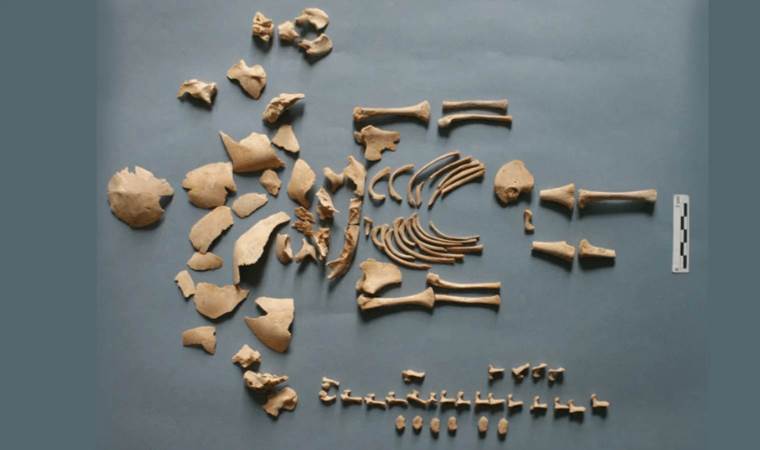Ancient DNA unveils down syndrome in ancient graves
A study analyzing DNA sequences from nearly 10,000 ancient individuals has uncovered six children with Down Syndrome.

By delving into details about their remains and burial grounds, scientists can begin unraveling the history of these children and their societal roles. Typically, humans are born with 46 chromosomes—22 pairs of autosomes, along with either XX or XY sex chromosomes. Occasionally, individuals are born with missing or extra copies of certain chromosomes, a condition termed aneuploidy.
Individuals with Down Syndrome possess an extra copy of chromosome 21, known as trisomy, wherein all cells in their body contain three copies of chromosome 21 instead of the typical two. While this condition affects approximately one in 1,000 births today, its prevalence among ancient populations remained less understood.
Adam “Ben” Rohrlach of the Max Planck Institute for Evolutionary Anthropology, alongside colleagues worldwide, orchestrated the first comprehensive study of rare genetic conditions in ancient human genomes. Among the nearly 10,000 DNA samples scrutinized, researchers were astonished to uncover six individuals exhibiting unusually high levels of chromosome 21 DNA, indicative of an extra chromosome.
While one sample hailed from a child buried in a Finnish churchyard during the 17th or 18th centuries, the remaining five were significantly older, originating from Bronze Age sites in Greece and Bulgaria, as well as Iron Age sites in Spain, dating back 5,000 to 2,500 years ago. Alongside these new cases, researchers verified a prior report of Down Syndrome in an infant from Ireland who perished between 3629 and 3371 BCE. However, beyond the genetic revelations, researchers gleaned a wealth of information about the gravesites and remains.
All the children were confirmed to have died in early infancy, with only one seemingly reaching their first birthday—a trend not unexpected, given the associated medical complications of Down Syndrome, which may have been insurmountable in ancient times.
The burial sites offered insights into the treatment of these children by their communities. “These burials seem to show us that these individuals were cared for and appreciated as part of their ancient societies,” remarked Rohrlach. This sentiment was echoed by the presence of special grave goods such as jewelry, seashells, and animal remains interred with some of the bodies. Moreover, the oldest burials were situated within settlements, indicating a privileged position for the deceased.
Down Syndrome wasn't the sole rare genetic condition detected. Another individual exhibited elevated levels of DNA sequences from chromosome 18, suggesting an additional chromosome—a characteristic of Trisomy 18, also known as Edwards Syndrome. Intriguingly, a child with Edwards Syndrome was discovered at one of the Spanish Iron Age burial sites, hinting at their perceived importance within their communities.
These findings underscore the potential compassion of prehistoric societies towards individuals with disabilities, prompting further research to illuminate ancient societal attitudes and responses toward those in need. Senior author Kay Prüfer remarked, “What we would like to learn is how ancient societies reacted to individuals that may have needed a helping hand or were simply a bit different.”
